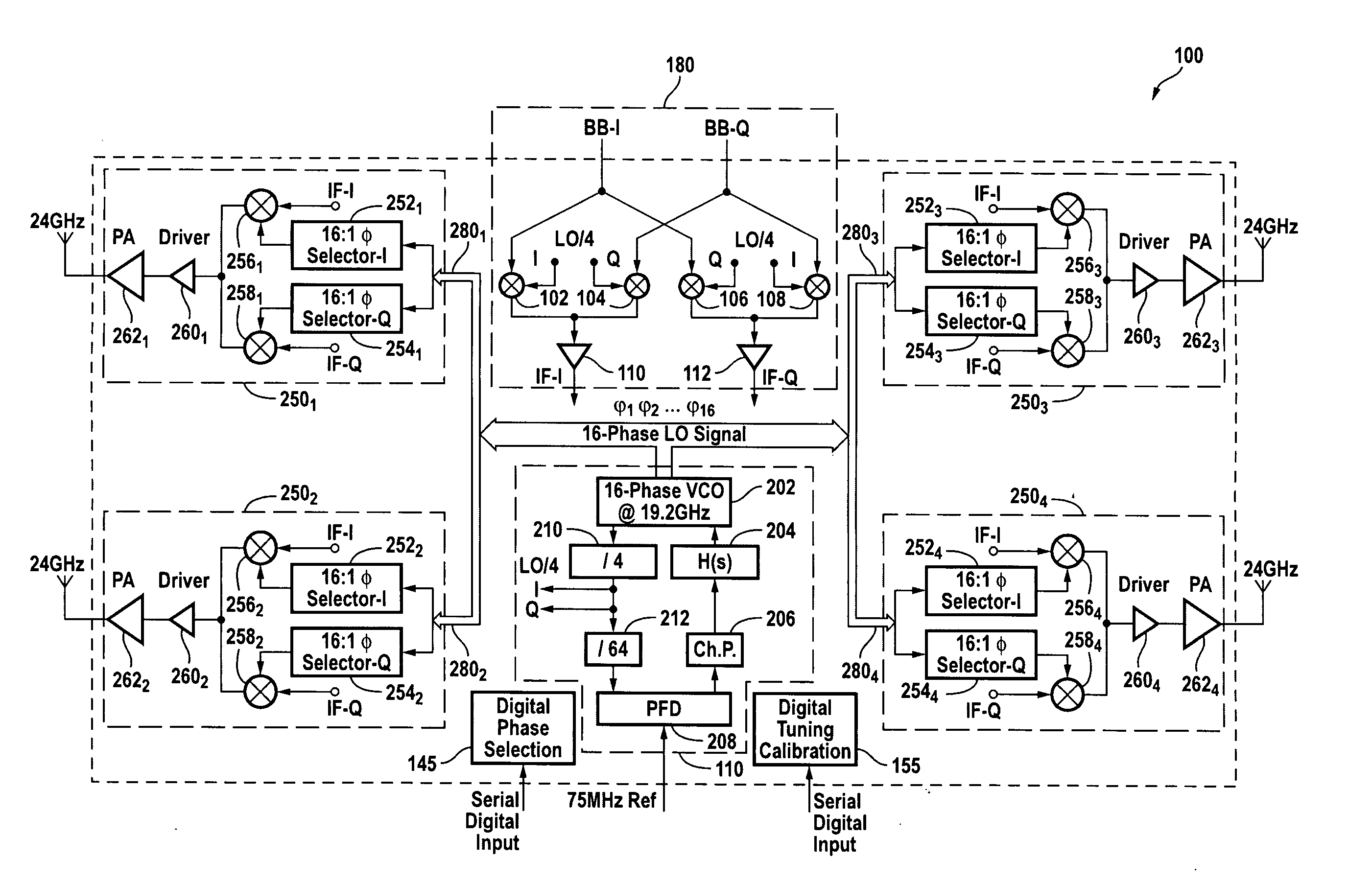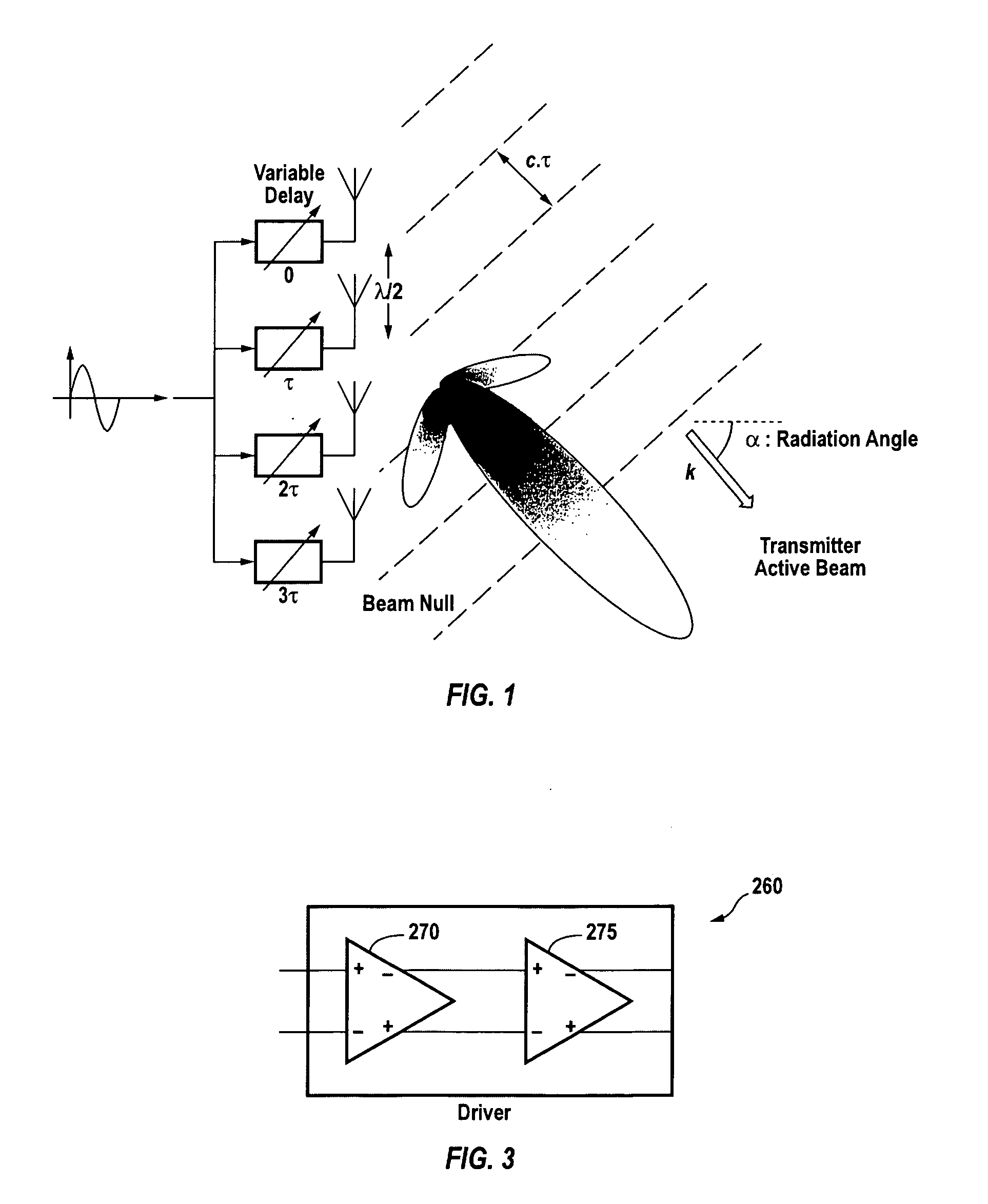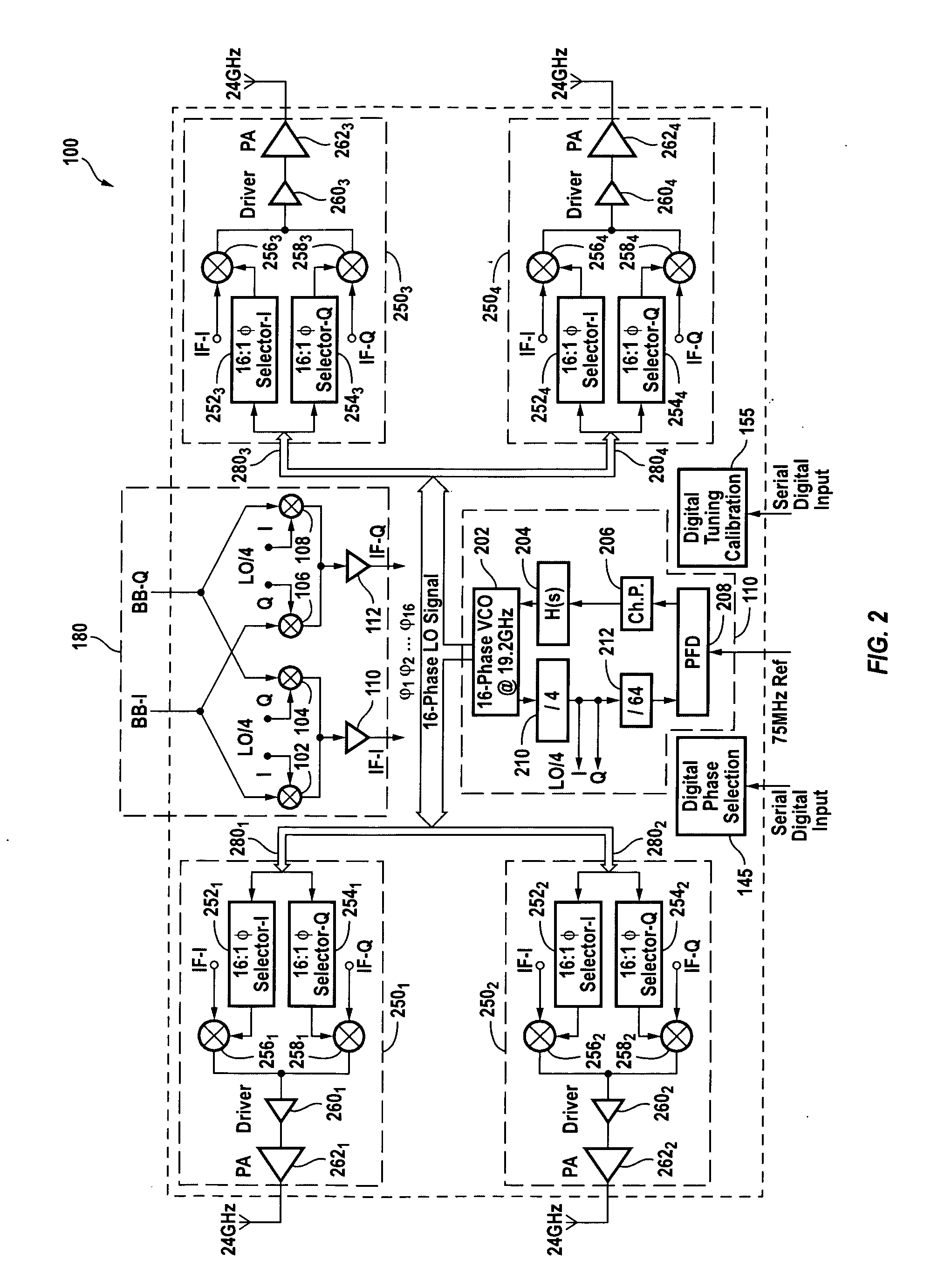Multi-element phased array transmitter with LO phase shifting and integrated power amplifier
- Summary
- Abstract
- Description
- Claims
- Application Information
AI Technical Summary
Benefits of technology
Problems solved by technology
Method used
Image
Examples
Embodiment Construction
[0024] A fully integrated CMOS multi-element phased-array transmitter, in accordance with the present invention, includes, in part, on-chip power amplifiers (PA), with integrated output matching. In one embodiment, the phased-array operates at 24 GHz supporting bit rates of 500 Mb / s.
[0025]FIG. 2 is a high-level architecture and floorplan diagram of an exemplary multi-element phased-array transmitter 100, in accordance with one embodiment of the present invention. The architecture of the multi-element phased-array transmitter (hereinafter alternatively referred to as transmitter) 100 provides the flexibility to configure the transmitter as a two-dimensional 2-by-2 array or as a one dimensional 1-by-4 array. The transmitter uses a two step up-conversion architecture with an IF frequency of, for example 4.8 GHz in one embodiment. The double-quadrature architecture for the up-conversion stages attenuate the signal at image frequencies. A 16-phase CMOS VCO that includes eight differenti...
PUM
 Login to View More
Login to View More Abstract
Description
Claims
Application Information
 Login to View More
Login to View More - R&D
- Intellectual Property
- Life Sciences
- Materials
- Tech Scout
- Unparalleled Data Quality
- Higher Quality Content
- 60% Fewer Hallucinations
Browse by: Latest US Patents, China's latest patents, Technical Efficacy Thesaurus, Application Domain, Technology Topic, Popular Technical Reports.
© 2025 PatSnap. All rights reserved.Legal|Privacy policy|Modern Slavery Act Transparency Statement|Sitemap|About US| Contact US: help@patsnap.com



